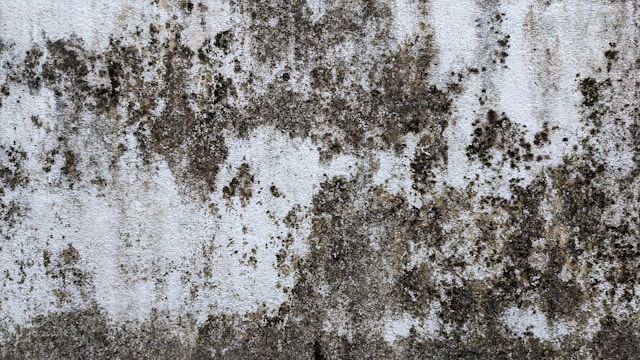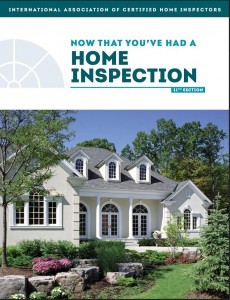Drastic reductions in energy costs can be achieved through very simple changes, most of which homeowners can do themselves.
Don’t Let the Southern Heat Trap Moisture: Mold Prevention Tips for Georgia Residents
June 2, 2025Living in Georgia’s humid subtropical climate, you face a constant battle against mold growth. High humidity and frequent rainfall create ideal conditions for mold to thrive in your home. To prevent this, guarantee proper ventilation by installing exhaust fans in bathrooms and kitchens, and use dehumidifiers in basements and laundry rooms. Monitor humidity levels with a hygrometer and promptly repair any water leaks or damage. Regular inspections, especially in high-risk areas like bathrooms, basements, and attics, are essential. By controlling moisture and maintaining good ventilation, you can protect your home and health from mold. Continuing to address these strategies will help you maintain a mold-free environment.

Introduction: Georgia’s Hidden Mold Problem
As a homeowner in Georgia, you face a significant risk of mold growth due to the state’s humid subtropical climate and frequent rainfall, which create ideal conditions for mold to thrive. The aging housing stock in Georgia, coupled with potential issues like inadequate ventilation, leaking plumbing, and poor construction, further exacerbate the problem. Mold can form in damp, poorly ventilated areas such as basements, bathrooms, and attics, posing health risks from common strains like Stachybotrys and Aspergillus[1][3][5].
Why mold is a major concern for homeowners in Georgia
Georgia’s humid subtropical climate, characterized by hot and humid summers along with mild winters with relatively high humidity, creates an ideal environment for mold growth. This climate, coupled with frequent heavy rainfall and flooding, makes mold a major concern for homeowners in Georgia.
Key Factors Contributing to Mold Growth in Georgia
| Factor | Description |
|---|---|
| High Humidity | Average humidity levels are high, especially in states like Georgia and Louisiana |
| Heavy Rainfall | Significant rainfall contributes to moisture accumulation in homes and buildings |
| Poor Ventilation | Inadequate ventilation systems allow humid air to remain stagnant, fostering mold growth |
| Aging Housing | Homes built around the 1980s may have infrastructure issues leading to hidden moisture problems |
Regular air quality testing and proactive mold prevention measures are essential to maintaining healthy indoor environments and preventing costly damage. Early detection using tools like thermal imaging and moisture meters can help identify hidden moisture issues before they escalate.
Understanding Mold and Its Dangers
Mold growth in Georgia is a significant concern due to the state’s humid subtropical climate and frequent extreme weather events, such as heavy rainfall and hurricanes. This environment creates ideal conditions for various mold species to thrive, particularly in damp, poorly ventilated areas like basements, bathrooms, and attics.
- Health Risks: Mold species like Stachybotrys and Aspergillus can produce mycotoxins that exacerbate respiratory issues, trigger allergic reactions, and even lead to infections in individuals with weakened immune systems.
- Structural Damage: Mold can cause significant structural damage to homes and buildings, compromising their integrity and requiring costly repairs.
- Hidden Dangers: High humidity mold can remain hidden, making regular mold inspections, such as those provided by Greene Home Inspection in Dunwoody using tools like thermal imaging and moisture meters, vital for early detection and prevention.
Georgia’s Climate: A Perfect Storm for Mold
Georgia’s humid subtropical climate, characterized by high humidity levels and frequent extreme weather events like heavy rainfall and hurricanes, creates an ideal environment for mold growth. The state’s average humidity, often exceeding 70%, coupled with considerable rainfall, makes it one of the top states at risk for mold in homes. This climate fosters moisture accumulation, particularly in areas like basements, bathrooms, and attics, which are prone to poor ventilation. To mitigate this risk, using tools such as moisture meters is essential for early detection of hidden moisture issues. By monitoring humidity levels and addressing potential water leaks or spills promptly, you can greatly reduce the Georgia climate mold risk and maintain a healthy indoor environment. Regular inspections are key to preventing mold proliferation.
High-Risk Areas in Georgia Homes
In your home, certain areas are more susceptible to mold growth due to their inherent conditions and usage. These high-risk areas often suffer from poor ventilation and excess moisture, creating an ideal environment for mold to thrive.
- Bathrooms: inadequate bathroom ventilation can lead to moisture buildup, especially around showers and sinks. Ensuring proper ventilation, such as using exhaust fans, is essential to prevent mold growth.
- Basements: these areas are prone to flooding and moisture accumulation due to their location. Regular inspections using thermal imaging for mold detection can help identify hidden moisture issues.
- Attics: a leaky roof or inadequate attic ventilation can result in significant moisture buildup. Proper ventilation and regular checks can prevent mold from forming in these often overlooked spaces.
These areas require special attention to maintain a healthy indoor environment.
Prevention Tools and Strategies
To effectively prevent mold growth in your home, it is essential to implement a combination of strategic measures that address both external and internal moisture sources.
Key Tools and Strategies
Ventilation and Humidity Control
- Use exhaust fans in high-moisture areas like bathrooms and kitchens, ensuring they vent outside.
- Install a dehumidifier in the basement to maintain ideal humidity levels (between 30% and 50%).
Moisture Management
- Repair leaky faucets and pipes promptly to eliminate water sources.
- Apply a vapor barrier in the crawl space to prevent moisture from rising into the home.
Monitoring and Regulation
- Utilize smart thermostats that can monitor and regulate humidity levels, adjusting your HVAC system accordingly.
- Use a hygrometer to monitor indoor humidity levels and take action when necessary.
| Area | Prevention Strategy |
|---|---|
| Basements | Install a dehumidifier |
| Crawl Spaces | Apply a vapor barrier |
| Bathrooms/Kitchens | Use exhaust fans vented outside |
| Entire Home | Use smart thermostats for humidity control |
| General | Monitor humidity with a hygrometer |
Professional Inspection & Maintenance Techniques
Implementing the tools and strategies for ventilation, moisture management, and monitoring is just the first step in preventing mold growth. For a more thorough approach, consider hiring a professional. A certified mold inspector from a company like Greene Home Inspection can use advanced tools such as thermal imaging and moisture meters to detect hidden moisture issues in areas like basements, bathrooms, and attics.
- Early Detection: Catch mold problems before they escalate, protecting your health and preventing costly repairs.
- Comprehensive Analysis: Get detailed reports on mold species and mycotoxin presence, ensuring you address all potential health risks.
- Expert Guidance: Receive tailored recommendations for remediation and maintenance to keep your home mold-free and your indoor air quality high.
Mold Remediation and When to Call Experts
When dealing with mold growth, timely and effective remediation is essential to prevent further damage and health risks. If you suspect mold in your home, especially in damp, poorly ventilated areas like basements, bathrooms, or attics, it’s vital to call experts. Certified professionals, such as those from Servpro or Mold-B-Gone Remediation, are equipped with advanced equipment and techniques to assess and remediate mold effectively.
Mold remediation involves thorough containment to prevent spore spread, safe removal of mold and mildew, and identification of the moisture source. HVAC systems can also be a mold risk if not properly maintained, as they can distribute mold spores throughout the home. Follow mold remediation tips by ensuring your HVAC system is regularly inspected and maintained to reduce this risk. Early action can save you from costly damage and maintain a healthy indoor environment.
How Greene Home Inspection Can Help
Given Georgia’s humid subtropical climate and the frequent rain it experiences, identifying and addressing hidden moisture is crucial for preventing mold growth. Greene Home Inspection in Dunwoody is a valuable resource for homeowners looking to detect and prevent mold issues.
When you hire Greene Home Inspection, you benefit from their advanced tools and expertise. Here are some ways they can help:
- Thermal Imaging: Identifies hidden moisture in areas like basements, bathrooms, and attics, guaranteeing early detection of potential mold growth.
- Moisture Meters: Accurately measures moisture levels in various parts of your home, including crawl spaces, to pinpoint areas at risk.
- Comprehensive Inspections: Guarantees that all areas of your home, including often-overlooked spaces like crawl spaces, are inspected for moisture and mold, helping you maintain a healthy indoor environment.
Call to Action
To maintain a healthy and mold-free home in Georgia’s humid climate, proactive action is vital. Regularly inspect your home, especially in areas prone to moisture like basements, bathrooms, and attics, for signs of mold such as Stachybotrys black mold and Aspergillus allergic mold. Use tools like thermal imaging and moisture meters to identify hidden moisture early, as provided by Greene Home Inspection.
Implement long-term prevention strategies, including regular maintenance and inspections to catch potential issues before they escalate. Address any leaks, water damage, or excess moisture promptly. Incorporate mold-resistant products, such as mold-resistant drywall and paint, into your home. Educate all household members on controlling humidity, maintaining proper ventilation, and recognizing the signs of mold to guarantee a collaborative effort in preventing mold growth.

 An inspection is just the start of keeping your home in good condition. With each inspection we offer a free book filled with home maintenance tips and other valuable information. Please
An inspection is just the start of keeping your home in good condition. With each inspection we offer a free book filled with home maintenance tips and other valuable information. Please